Dogs see the world through their noses. But alert tracking breeds? They read it like a book!
A single footprint in mud. A hat was dropped hours ago. A person missing in acres of wilderness. To us, these are needle-in-a-haystack problems. To alert tracking dogs, they’re no challenge.
That’s just the hardware—their software (instincts) makes them track naturally. Alert tracking breeds don’t just smell better; they notice everything. A shifted chair, a stranger’s footsteps, the neighbor’s new car, nothing gets past them.
They combine this awareness with energy and focus that keeps them on task hour after hour. Whether working professionally or living as family pets, they bring these remarkable traits home.
These seven breeds represent the best of these remarkable skills.
Alert Tracking Dog Breeds
1. Bloodhound
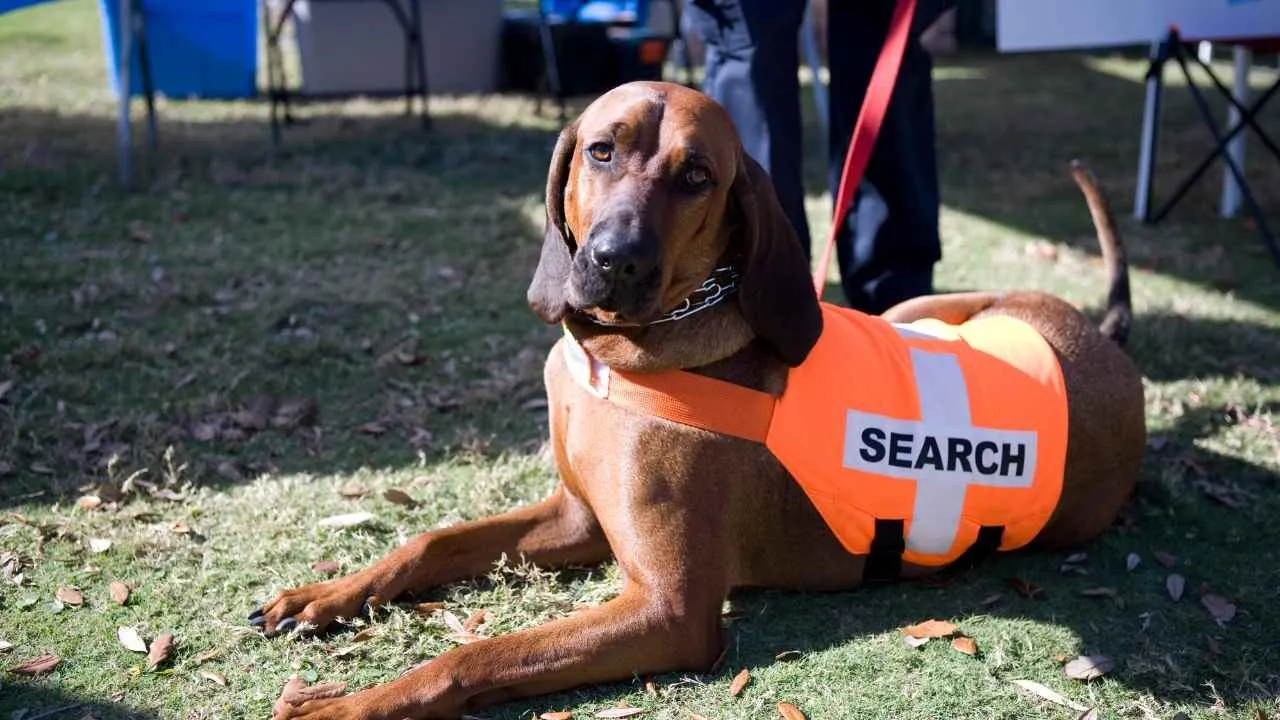
Bloodhound’s keen sense of smell is famous for a reason. These dogs were once trusted by medieval hunters to track animals through thick forests. Even today, they are known for their incredible ability to follow a trail for miles. Their nose is so reliable that their findings are sometimes used as evidence in court.
They’re often chosen for search and rescue operations because of how well they follow scent trails. Whether it’s finding a lost hiker or helping in an emergency, they don’t give up easily. But at home, this strong instinct can be risky if they’re left alone outside. They’ll follow any smell that catches their interest and wander far from home.
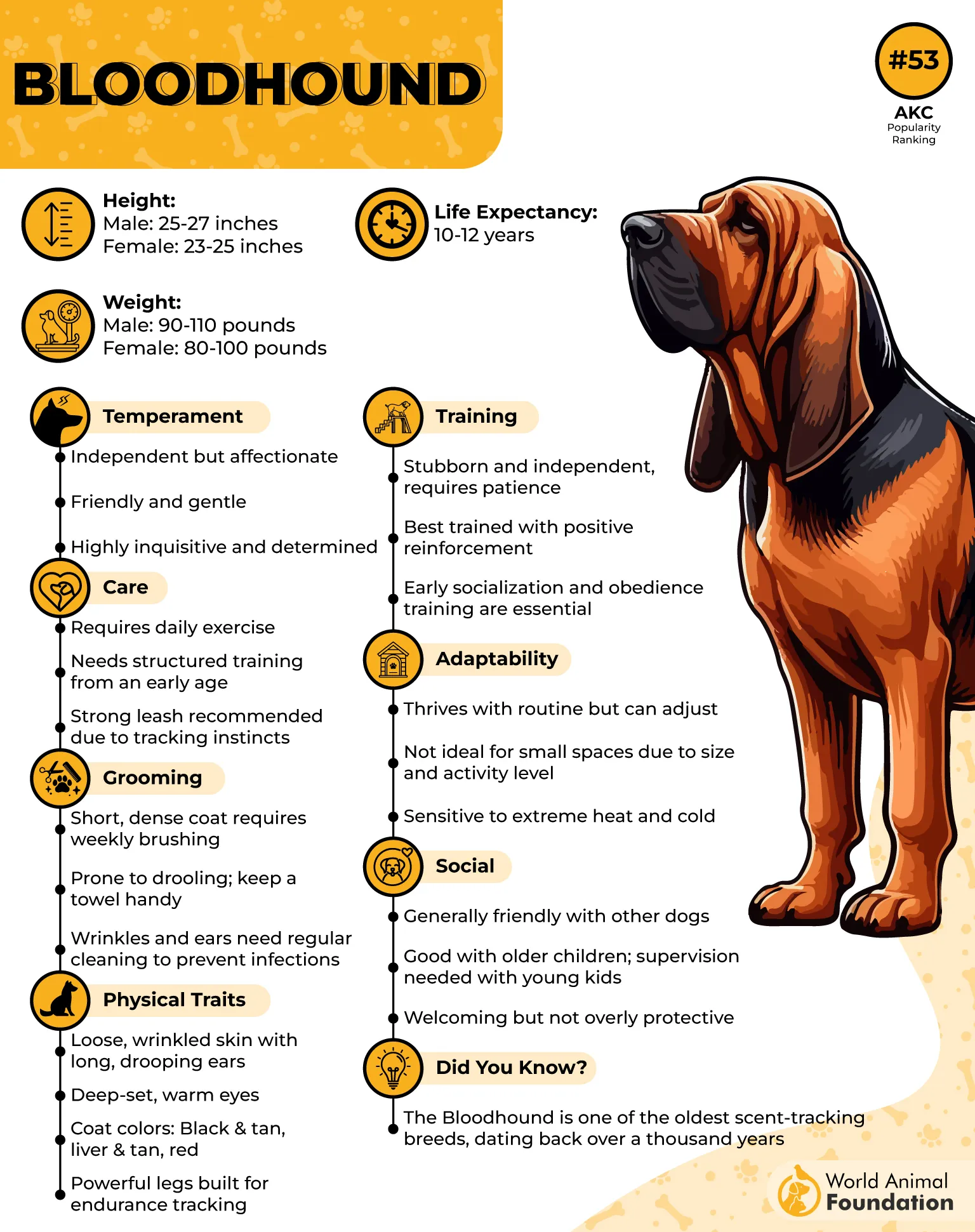
As per the insights from PDSA, Bloodhounds also make a lot of noise, especially when they feel lonely or excited. Their deep, echoing bay can be heard from quite a distance. This trait helped them stay in touch with other dogs in the past. But in cities or apartments, their howling can become a bit too much.
They’re also escape artists who can climb fences or dig under them without much effort. Even a six-foot fence may not be enough to keep them in. That’s why many owners choose to supervise them when they’re outside. Their drive to follow a scent often outweighs their desire to stay put.
Training a Bloodhound takes patience, since they like to do things their own way. They don’t always respond quickly, so gentle and consistent teaching works best. Once their energy is guided in the right direction, they become focused and hardworking. Activities like hiking, long walks, and tracking help them stay happy and busy.
2. Beagle
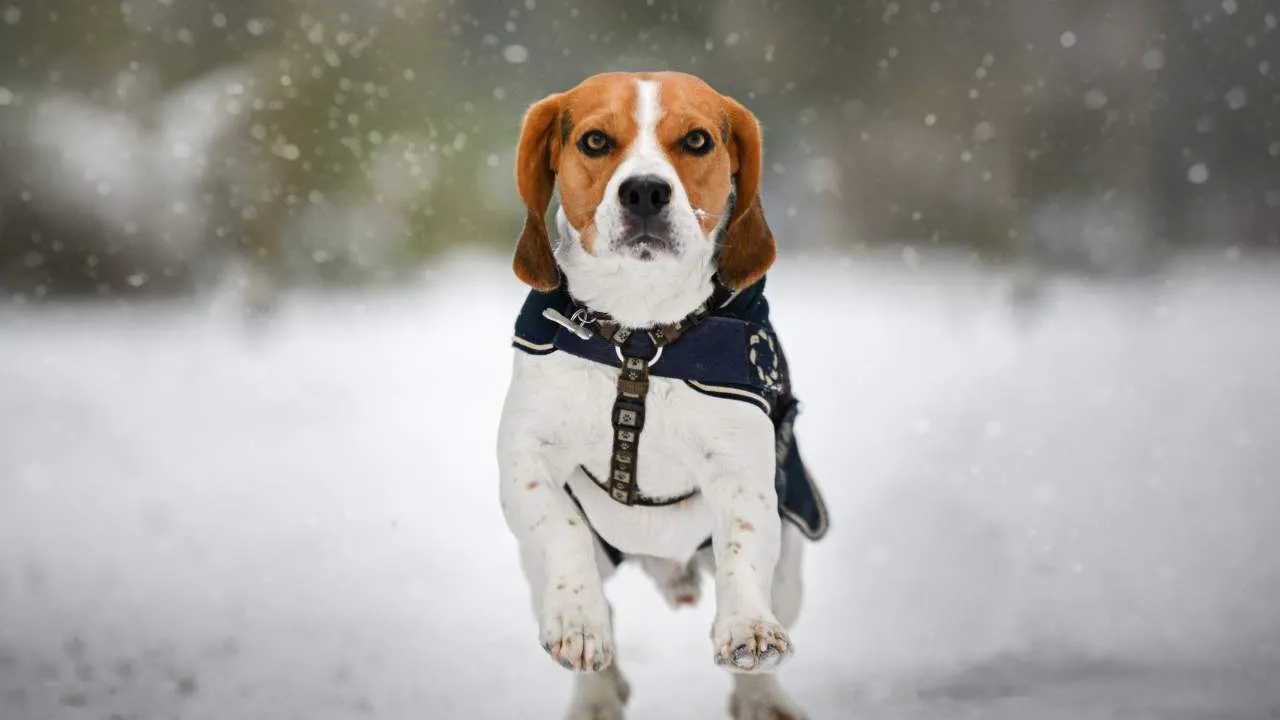
Beagles are cheerful, affectionate dogs that love being part of the family. They usually get along well with children and other pets, making them a popular choice for many homes. Their friendly nature shines through in daily life, but so does their high energy. These dogs are happiest when they’re busy, moving, and exploring.
Bred as hunters, Beagles have a natural tracking ability that drives everything they do. Their nose often leads the way, from kitchen counters to backpacks, in search of tasty smells. Once they catch a scent, it’s hard to pull them away from it. This powerful instinct means they always need supervision outside.
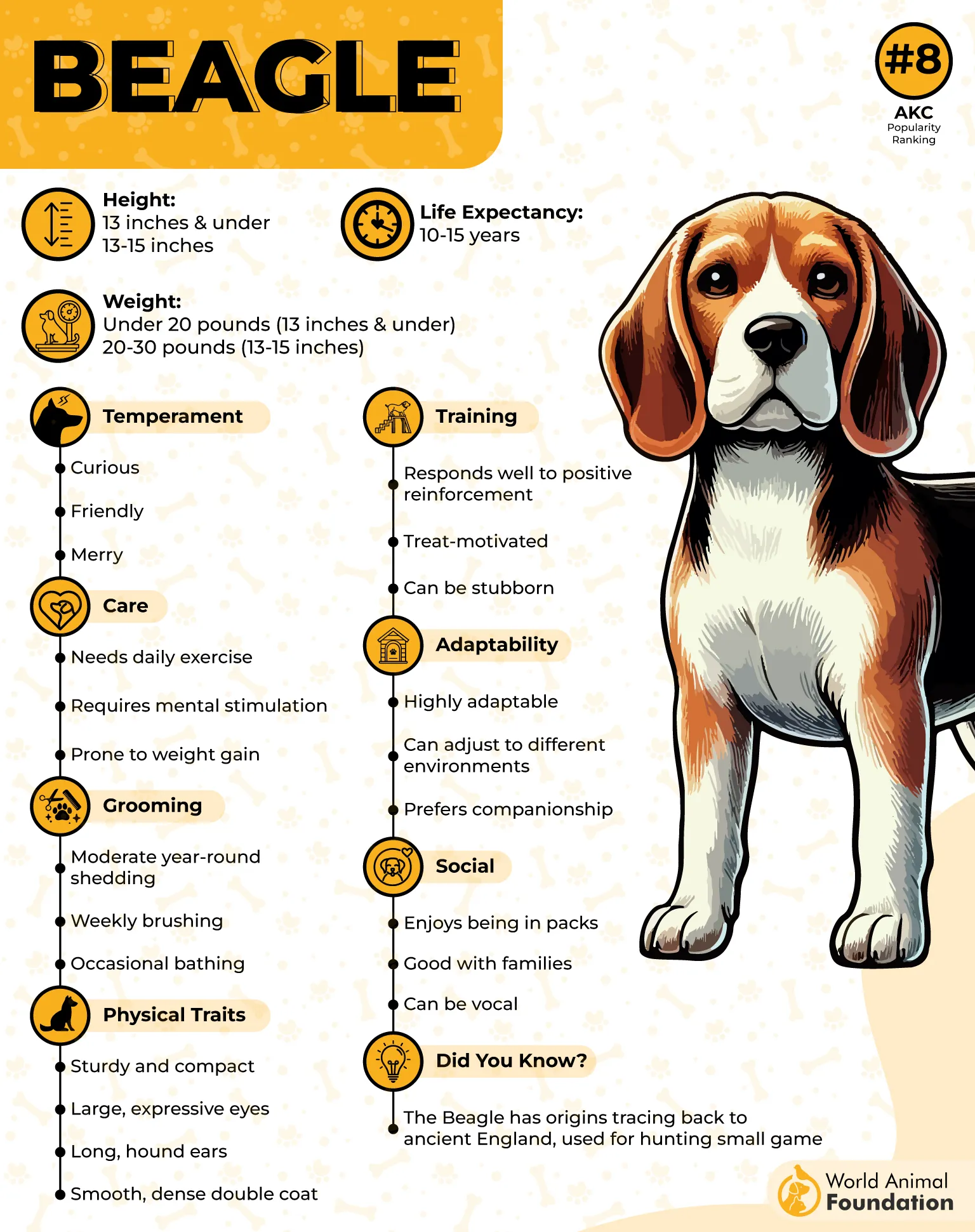
Since they’re naturally curious, Beagle puppies need early socialization to help them grow into confident, well-behaved adults. They’re quick learners, especially when food is involved, but their short attention spans can make training a challenge. Consistent routines, praise, and patience are key. It’s also smart to train them before meals to keep their focus.
Beagles love walks, hikes, and playtime, needing about an hour of exercise daily to stay healthy and calm. But if left alone or under-stimulated, they’ll often dig, chew, or bark out of boredom. Their curiosity can also get them into trouble—they may follow a scent right out of the yard. Their strong nose have even helped in finding missing persons.
Loud barks and howls are common, especially when something unfamiliar catches their attention. But under that noise is a clever, loyal dog who wants to please, especially when treats are involved. With structure and the right motivation, Beagles become incredibly versatile dogs, happy to join their humans on almost any adventure.
3. German Shepherd
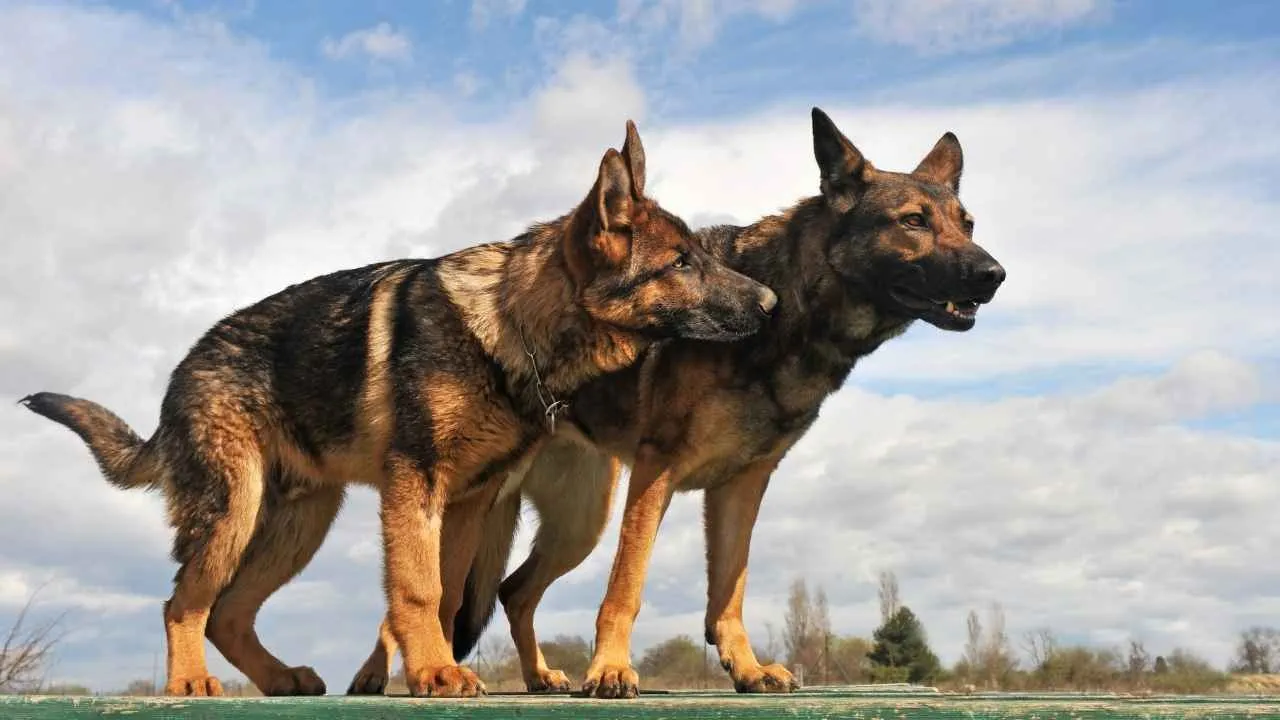
German Shepherds are strong, smart, and loyal—a combination that’s made them a favorite in homes and working roles alike. These dogs thrive when they have a purpose, whether that’s guarding, herding, or simply sticking close to their people. With a confident attitude and eager mind, they’re easy to admire. It’s no surprise they’re one of the most popular breeds in the country.
They were bred to move, and that drive hasn’t gone away. These dogs need daily activity—runs, hikes, or any kind of job to keep their energy in check. Their sharp instincts and ability to focus make them ideal for search and rescue missions. They don’t just work hard—they love to stay active with a goal in mind.
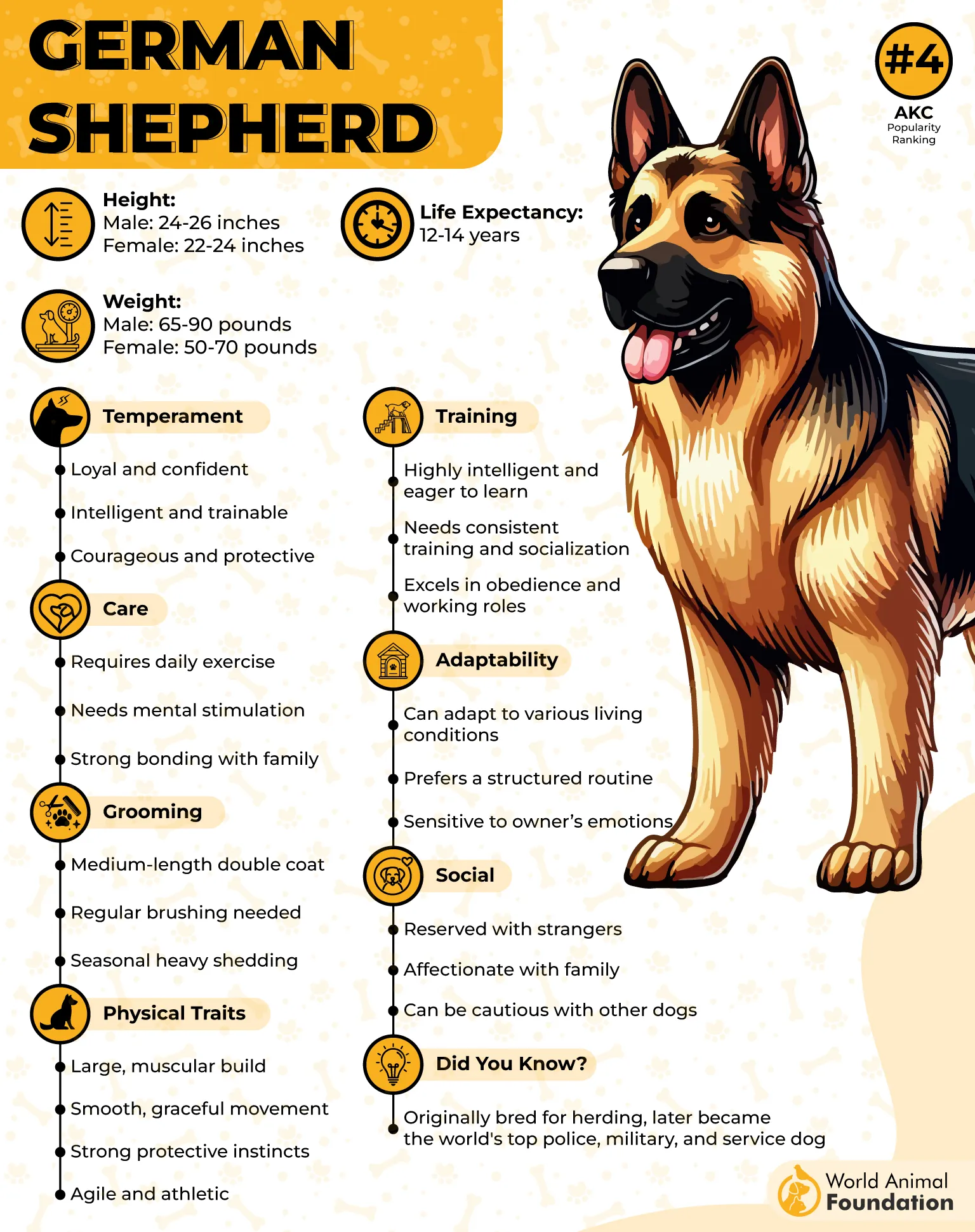
Start training early, because this breed picks things up fast, and they’ll make their own rules if you don’t set them. A German Shepherd puppy benefits from structure, calm leadership, and lots of practice. These dogs shine when they’re given clear boundaries and consistent routines. Teaching them young helps avoid behavior issues later on.
Even with all their drive, they’re gentle and affectionate with their family. They may not warm up to strangers right away, but that alertness is part of their nature. As a larger dog, they carry a strong presence, but also a deep bond with their people. Socialization helps them stay balanced and relaxed in new settings.
German Shepherds need more than just a walk around the block; they crave mental challenges, too. Without them, they may become restless or frustrated. Among many dogs, few match their focus and work ethic. These breeds excel when their body and brain are equally engaged every day.
4. Belgian Malinois
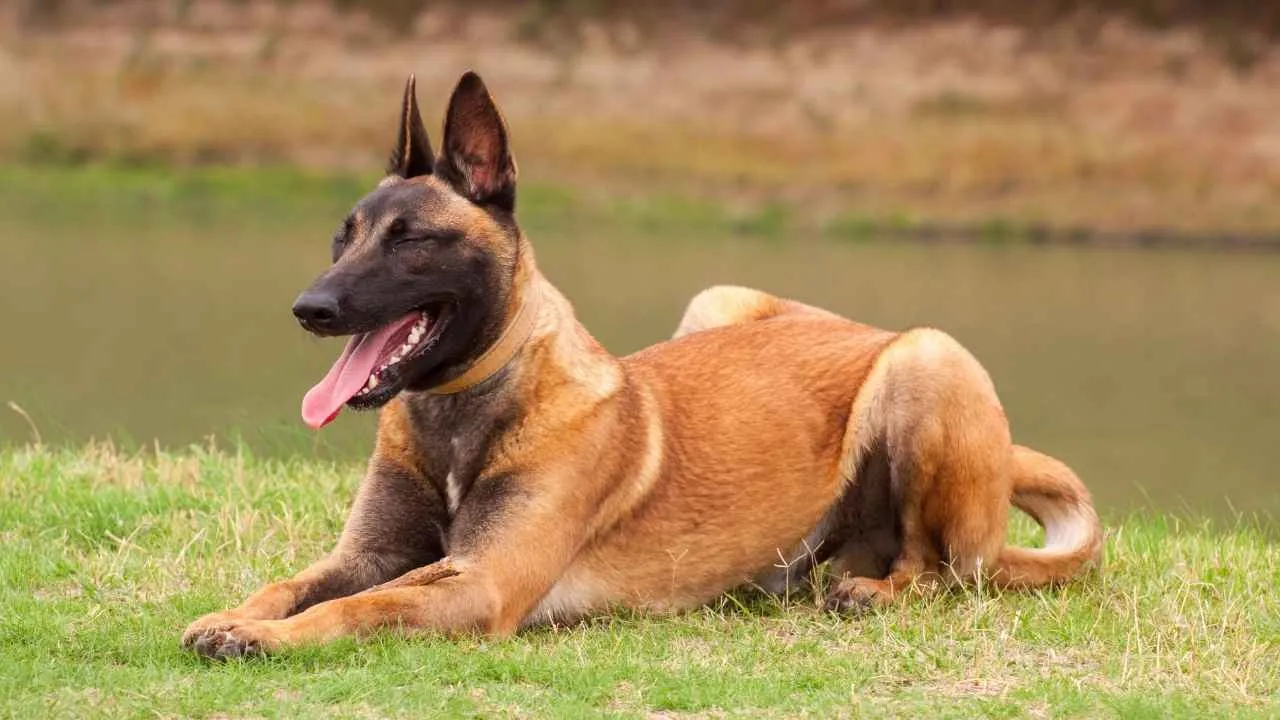
Belgian Malinois are confident, sharp, and built for action. They bond deeply with their people and thrive when given a clear purpose. This isn’t a dog for lazy afternoons on the couch—it’s a companion for those who love to move. With the right match, they become fiercely loyal and endlessly impressive partners.
Bred in Belgium to herd livestock, they’ve since stepped into much bigger roles. You’ll now find them in military units, assisting law enforcement, and working as rescue dogs in tough environments. They respond best in homes where their drive is channeled into training, challenges, and outdoor adventures. They don’t sit still for long, and they don’t want to.
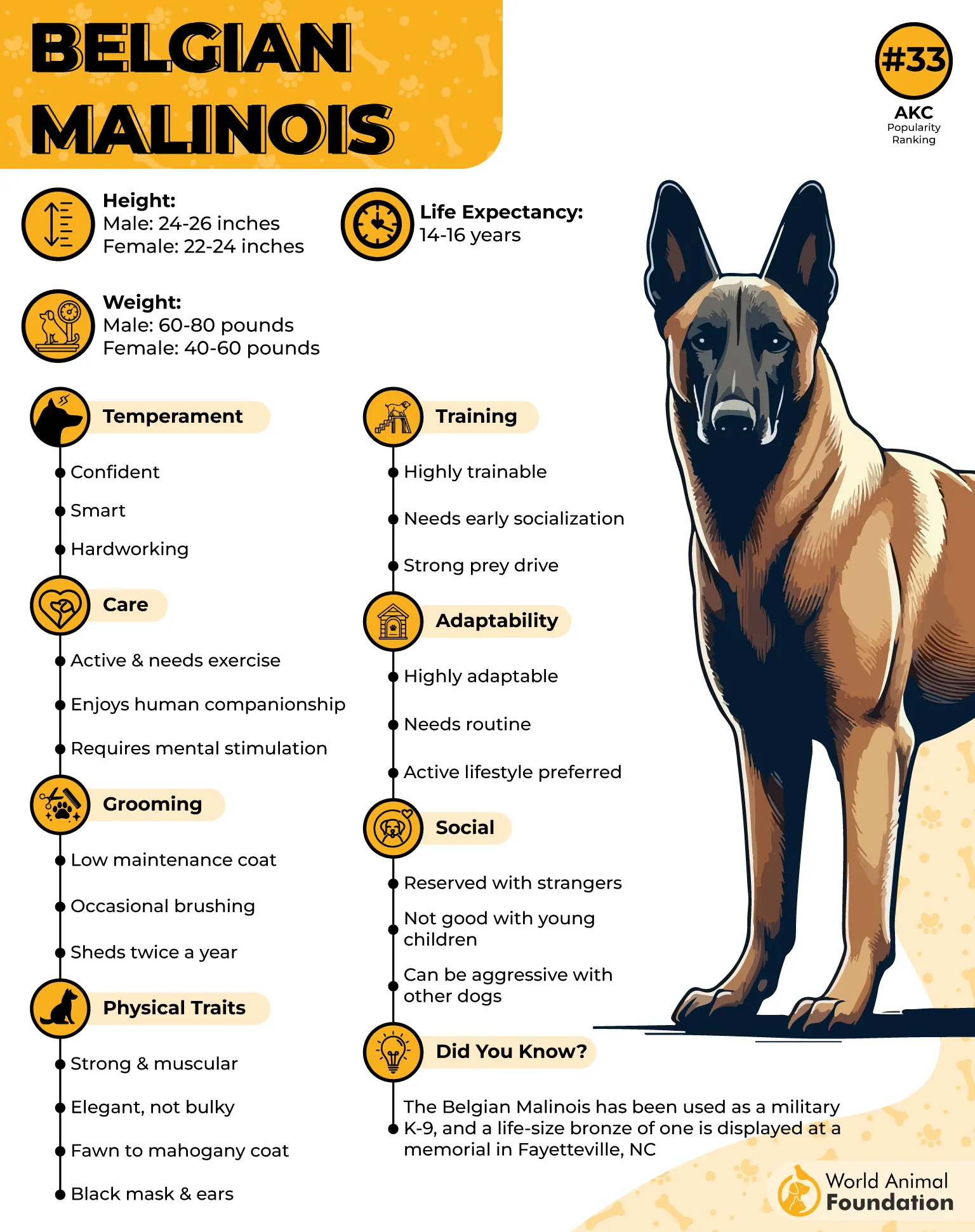
This breed needs more than a walk around the block. Think daily runs, structured play, or training courses to satisfy their mental and physical needs. Police dog breeds like the Malinois don’t just enjoy exercise—they need it to feel balanced. A bored Malinois will quickly create their own entertainment, and it’s rarely what you want.
When under-stimulated, these dogs may chew shoes, tear cushions, or dig up your garden, as PetMD suggests. It’s not bad behavior for the sake of it—it’s just a sign of a working dog left without work. With proper training and outlets like fetch, agility, or obedience, they shine. This is a breed that pushes you to level up every single day.
Not suited for first-time owners, Malinois require experience, structure, and plenty of time. Their intensity often gets them mistaken for aggressive dogs, but with training, they’re controlled and capable. From herding fields to roles as service dogs, they do it all. Just give them the job—and watch them crush it.
5. English Springer Spaniel
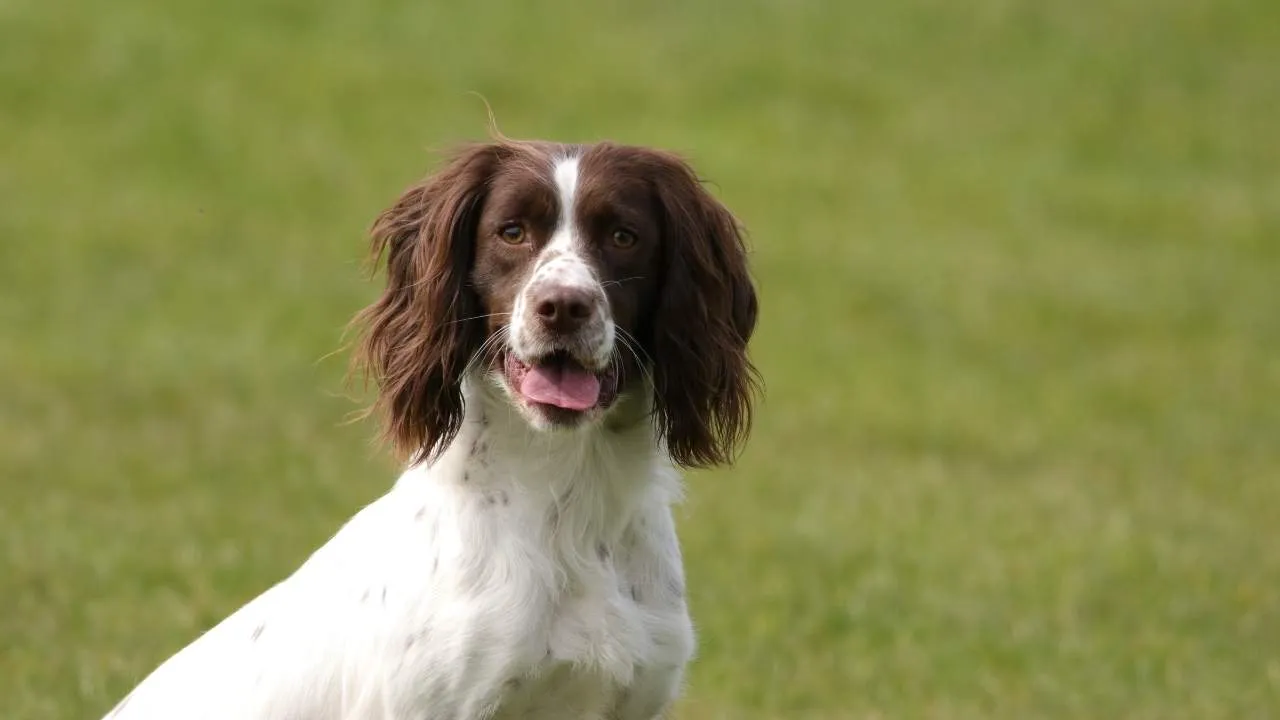
English Springer Spaniels are the kind of dogs that are always up for something. Whether it’s running across a field or splashing into a lake, they want to be part of the action. They thrive on connection and love being useful. For a hands-on companion, this one’s ready to go.
Springers are great for families who enjoy spending time together, especially outdoors. They’re gentle with kids, loyal to adults, and usually get along well with other pets. But they’re not couch potatoes. These pups need attention, movement, and lots of time with their people.
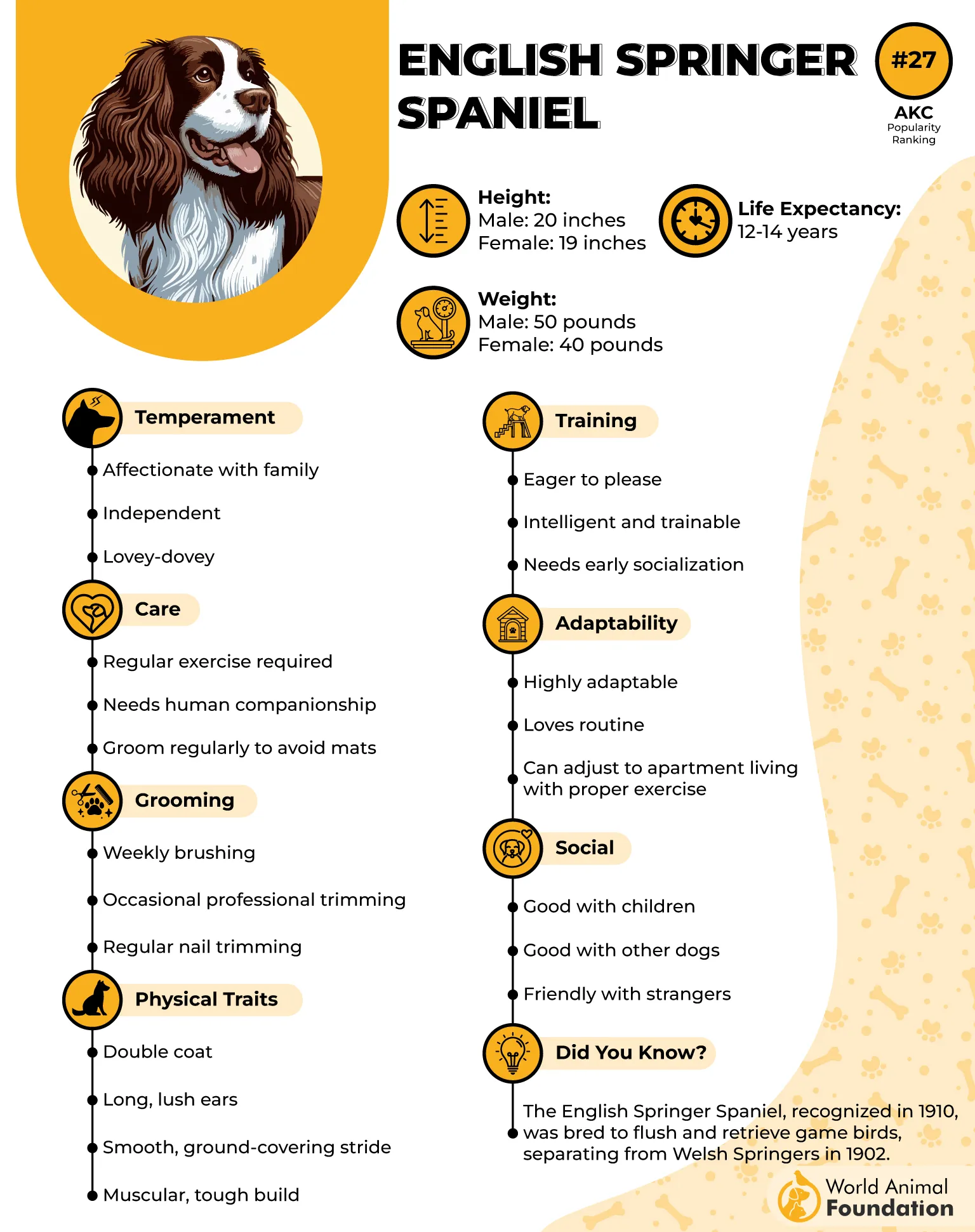
They’re naturally eager to please and easy to train, especially when there’s fun involved. Long walks, games of fetch, or even a swim can keep them balanced and happy. They’re not big barkers, but they do speak up when excited or curious. A tired Springer is a well-behaved one.
Springer puppies will test your patience at times, but they grow into reliable, even-tempered dogs with the right care. They adapt well to different homes, as long as they’re not left alone for too long. These dogs are happiest when they feel included in everyday life.
From agility to tracking, they’re always up for a challenge. They shine when given something to focus on, and their energy is best used, not ignored. If you’re willing to put in the time, a Springer will give back more than you expect.
6. Redbone Coonhound
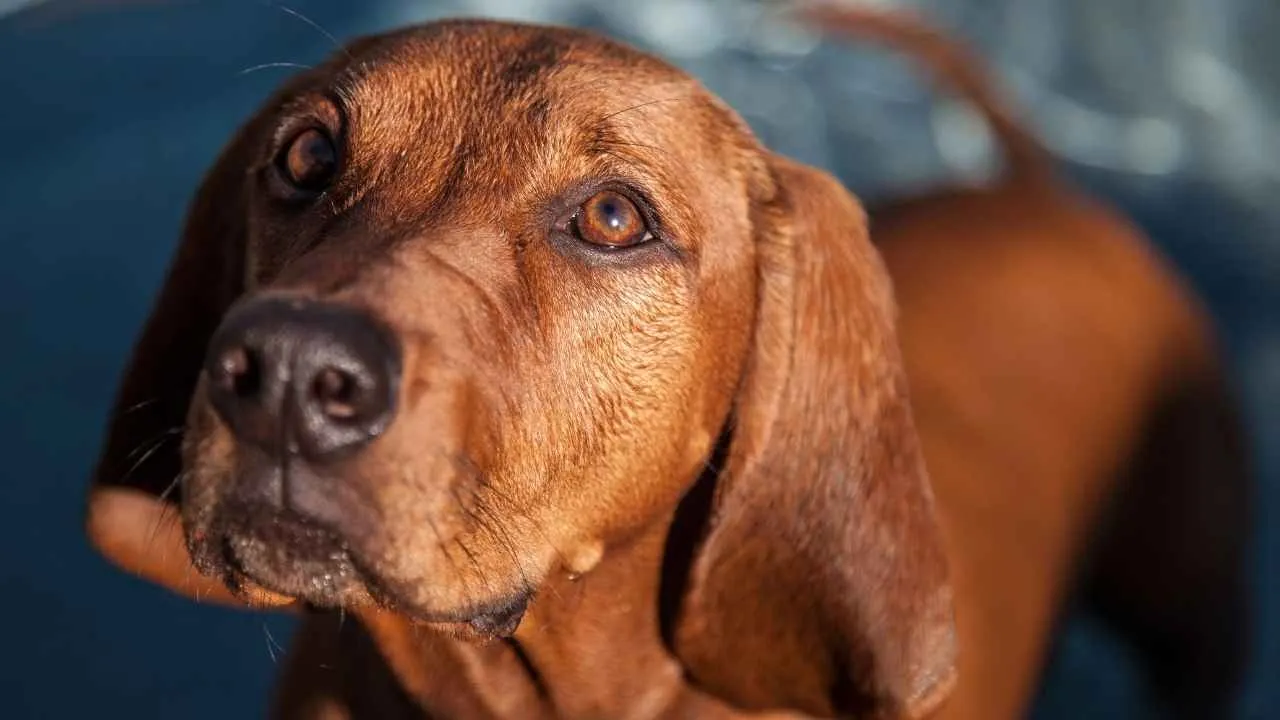
Redbone Coonhounds—often called Reds—stand out with their deep red coats and soulful eyes. They’re built for the hunt, with sharp senses, long-lasting energy, and serious speed. Whether in the field or on a trail, this breed stays focused and driven. At home, they swap that intensity for a more laid-back vibe.
They’re playful, goofy, and love roughhousing with kids, but they’re best suited for homes with older children. Reds are strong and a little clumsy, which can be a lot for toddlers. Their energy is contagious, and when properly channeled, they make loyal, fun-loving family dogs.
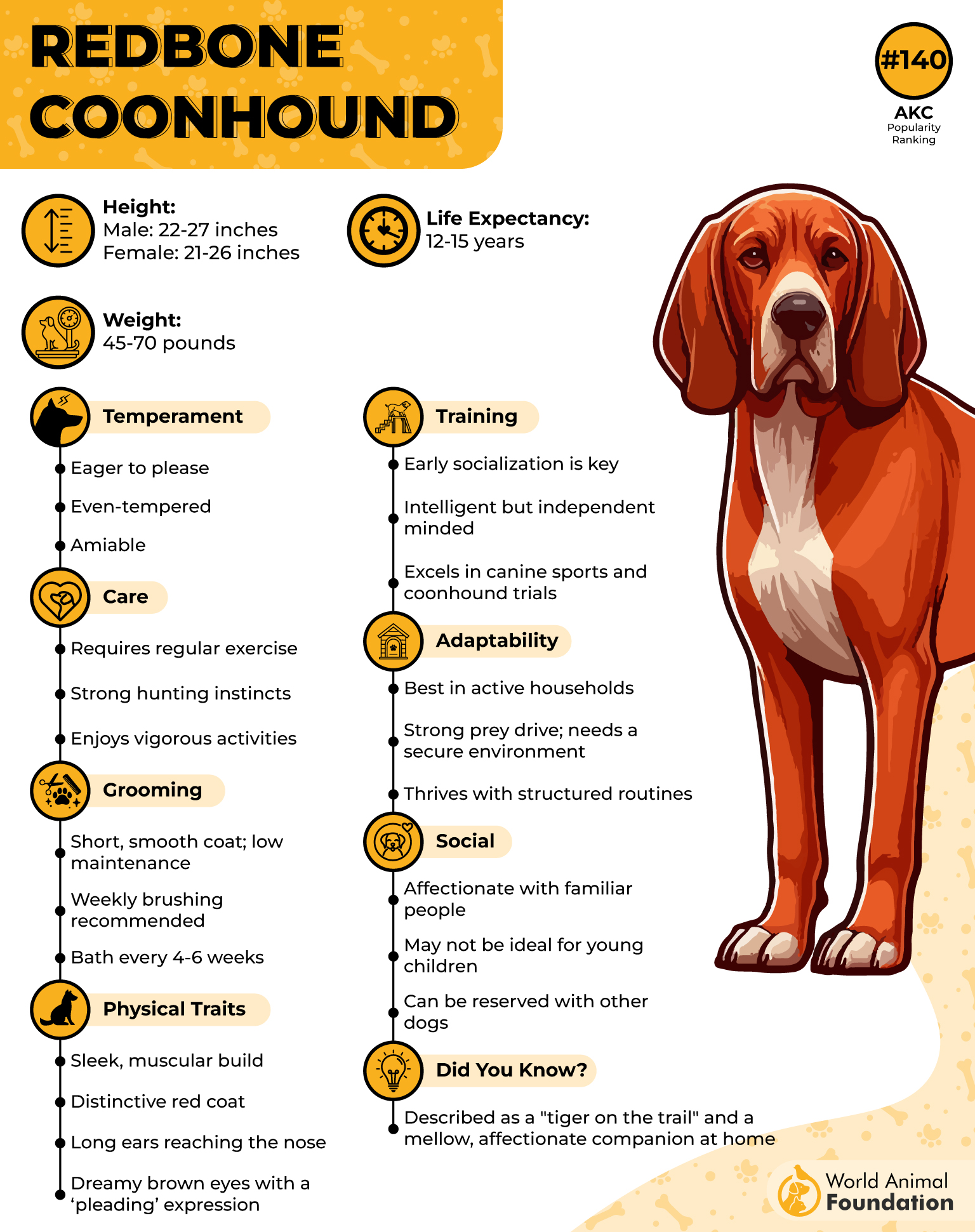
Redbone Coonhounds are naturally social with other dogs. They enjoy group play and rarely show aggression. That said, small animals are a different story—their hunting instincts kick in fast. A Red might see a cat as something to chase, not cuddle with.
They aren’t naturally protective or suspicious. If someone rings the bell, they’ll look at you like, “Should we go check?” They aren’t guard dogs, but they will stay alert outside, especially if something catches their nose, as Orvis claims. Inside, they’re mellow and more interested in company than security.
Training a Red takes a little creativity and patience. They respond well to food, praise, and short sessions that feel more like play than rules. Agility and scent work are excellent outlets for their energy. Give them a purpose, and they’ll stay happy, focused, and close by your side.
7. American Foxhound
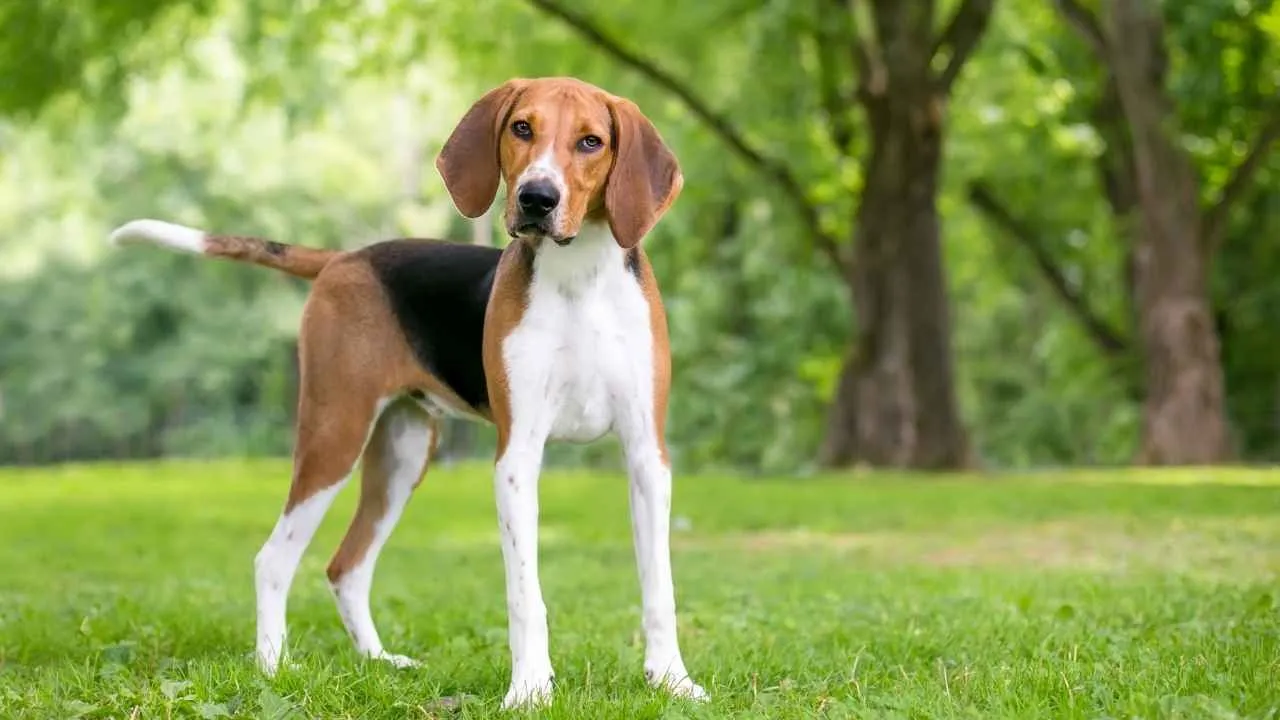
The American Foxhound is a sweet and mild-mannered breed, known for its loyalty and affection. Originally bred for hunting, these dogs are intelligent and high-energy, requiring plenty of daily exercise and mental stimulation. They form strong bonds with their family and get along well with other canines.
Their natural prey drive can be problematic around small animals, especially foxes, which they were bred to track. While they have a gentle nature toward humans, their hunting instincts mean they may chase anything that piques their interest. A securely fenced yard or leash is essential to prevent them from wandering.
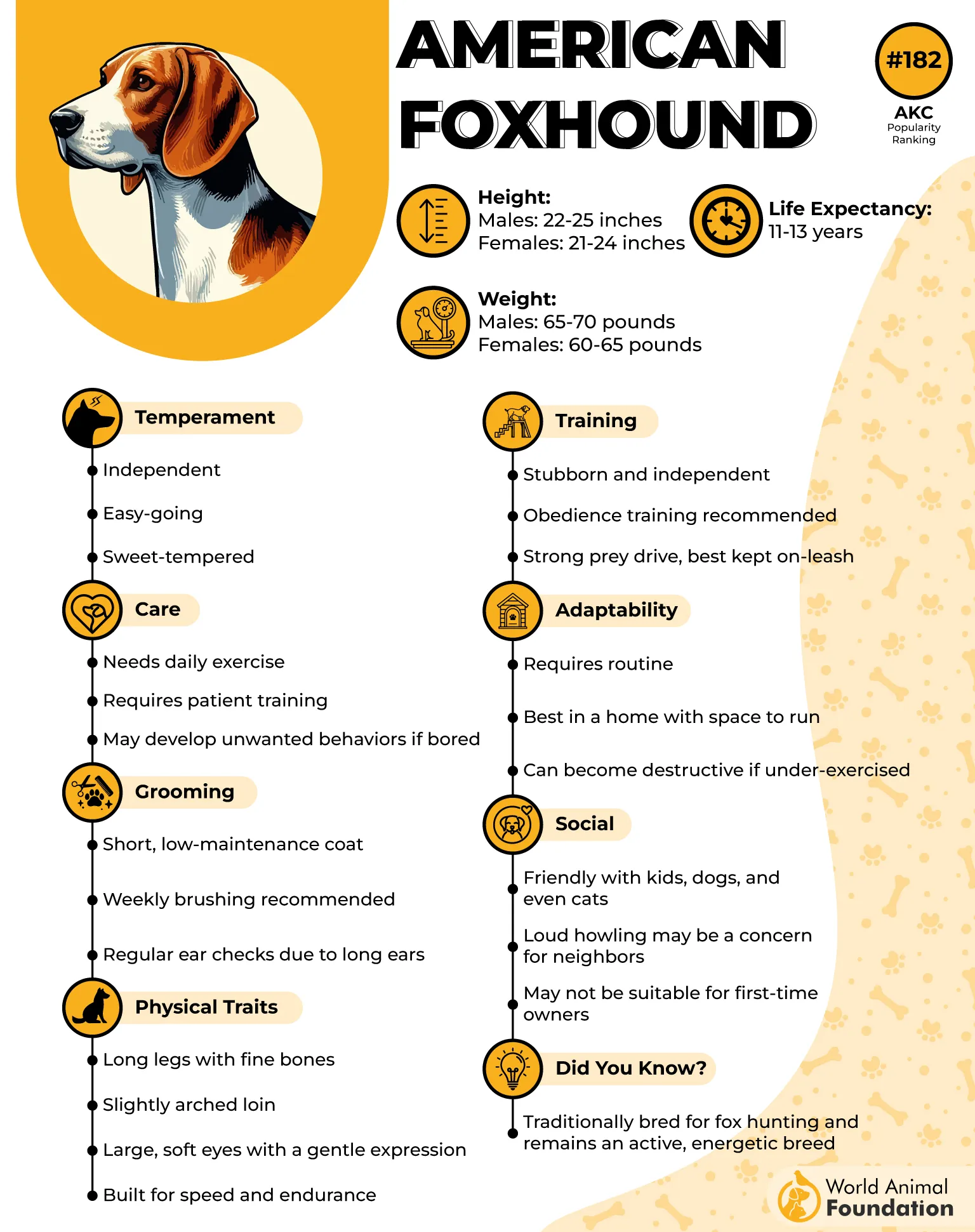
Training an American Foxhound requires patience and consistency. Though intelligent, they have an independent streak, which can make them a bit stubborn. Positive reinforcement using treats, praise, and toys works best to motivate them. Early socialization is crucial to ensure they are confident and well-behaved.
To keep an American Foxhound happy, regular exercise is essential. They thrive on long walks, jogging, and hiking to burn off their energy. Mental stimulation through activities like obedience training and tracking also helps keep them engaged. They enjoy having a “job” to do, making them great companions for active families.
With the right outlets for their energy and mental stimulation, American Foxhounds can be well-behaved and loving companions. Their affectionate and mild temperament makes them a wonderful addition to the right home. As long as their exercise needs are met, they’re happy, loyal, and ready to be your devoted friend.
Conclusion
Alert tracking breeds bring ancient skills to modern problems. Their natural abilities make them ideal partners for both families and professionals seeking dogs with exceptional sensing capabilities.
These hunting dogs combine sharp senses with tireless energy, creating companions who excel at finding what’s hidden. Whether tracking missing persons or detecting contraband, they approach their work with focus and determination.
Many serve with police forces worldwide, using their highly trained nature to support law enforcement. Their muscular build and stamina allow them to work long hours in challenging conditions.
Beyond their working roles, these breeds bring a protective nature and loyalty to their families. They form deep bonds with their humans while remaining vigilant to anything unusual in their environment.
Highly intelligent and purpose-driven, these seven breeds represent the perfect marriage of instinct and training. They remind us that sometimes, the best solution to our most challenging problems has four paws and a wet nose.

